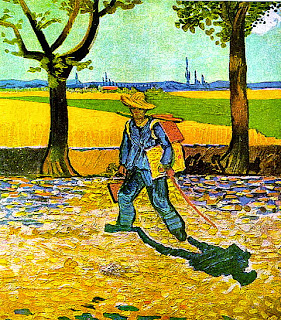What is rationality and strategy? According to a
paper by Schaefer, et. al (2013) rationality is an interpersonal communication
skill versus actual subject knowledge. There is a differentiation between
emancipative communication and strategic thinking. The researchers studied the prefrontal and
parietal brain regions that are associated with strategic and communicative
reasoning according to the theory of communicative action. They found that there are two different processes
at place when discussing strategic reasoning and social emotional cognitions. Each
has their own neural connections that determine actual strategies and the
possible effectiveness of those strategies.
The theory of communicative reasoning by Jurgen
Habermas focuses on either success oriented strategic action or social understanding
oriented communicative action. Strategic action in this theory is the
manipulation of others while communicative reasoning seeks to harmonize actions
between the person and their social environment by using language and semantics.
They use two different reasoning functions to create an appropriate strategy.
Rationality has both a social and a logical side. Communicative
reasoning is collaborative and strategic reasoning is goal oriented. Each is a
means to an end but one takes into consideration the moral dilemmas created
through decisions while the other seeks gains regardless of the human outcome. The
way in which a person approaches the environment determines the type of logic
they are using and where it is based within the neural connections of the
brain.
The research on social perceiving is important
because it can help us determine how leaders make decisions strategically. As
one uses pure logic without moral reasoning they activate a different set of
brain functions to make those determinations. However, by using moral reasoning
and an alternative set of brain functioning they can consider such things as
the cost of human life or appropriate impact on individuals. Stronger leaders
and clear strategy should consider in part both arenas to maximize gains for
the greatest amount of people.
Moral judgments and the ability to see these moral dilemmas
is a precursor to appropriate judgment. Pure strategy without moral judgment is
considered anti-social by nature and doesn’t take into account the needs of
people that the strategy influences. One can think of the psychopath who is
strategically accurate in short-term gains but fails to have empathy and
consideration over those the decisions impacts. Leadership and strategy should
not be inhumane, cold, calculating, or abusive to others but should instead
seek a collaborative maximum gain.
In their study, Schaefer, et. al
(2013) studied the brains of individuals as they judged different real life
scenarios from a communicative reasoning or strategic perspective. The far
majority of participants were able to judge between the two types of
approaches. They found that communicative reasoning activated a network of
brain areas including the temporal poles, STS, and precuneus. Strategic
reasoning showed less activation in these areas of the brain when compared to
communicative reasoning.
The argument furthers the concept
that strategy has both an economic and a social aspect. Pure strategic thinking
is about creating gain in the market regardless of its consequences on others
while communicative reasoning takes into consideration moral concepts. Well
balanced strategy should process from the two strategic methods in order to
understand the pure logic of decisions but also the moral consequences of such
decisions. As most of our world and environment is made of social
interpretations and interaction it is this process of considering the
possibilities of cooperation that further logical strategic action.
Schaefer, et. al. (2013).
Communicative versus strategic rationality: Haberman’s theory of communicative
action and the social brain. PloS One, 29
(5).
